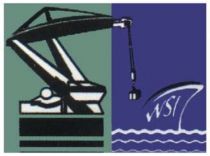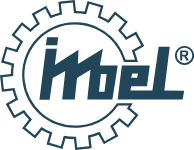United States Electric Power Industry Seminar: Gain an Understanding of ISO Markets, Power Transactions, and Renewable Energy Resources (Houston, United States - October 11-12, 2022) - ResearchAndMarkets.com
The "Today's U.S. Electric Power Industry, ISO Markets, Power Transactions, and Renewable Energy Resources" training has been added to ResearchAndMarkets.com's offering.
If you want to truly understand the U.S. electric power industry, this course is for you.
This in-depth program provides a comprehensive and clear explanation of the structure, function, and current status of today's U. S. electric power industry; the many industry topics listed below; and how PPAs and other power transactions are done.
Each part of this complex industry will be explained piece-by-piece, and then the pieces will be integrated so that you will leave the seminar with an understanding of "how it all fits together."
What You Will Learn
- The structure and function of the electric service system, its terminology and units, and the properties of electricity.
- How the North American power grid is structured, how it operates and what the different types of electric generation are.
- How control areas, balancing authorities, spinning reserves, AGC and security constrained environmental economic dispatch work.
- Who the key players in the industry are, and why the industry is so difficult to restructure.
- How cost-of-service utility ratemaking and open access deregulated markets work, and why open access retail electricity markets are finally developing in states that permit them.
- What ISOs, RTOs, ITCs and merchant transmission companies are, and how they operate.
- What the smart grid, demand side management ("DSM"), distributed energy resources ("DER") and demand response ("DR") are, and how these forms of "virtual generation" and renewable energy resources are disrupting the U.S. power industry.
- The opportunities and challenges associated with wind, solar and other renewables.
- How ISO Day-Ahead energy auction markets operate in PJM, New York, Texas, California, MISO and other ISO areas;
- What locational marginal pricing (LMP) is and why it is important; how Day-Ahead and Real Time LMP is applied in the ISO markets, and why FTRs, TCCs, CRRs, TCRs, virtual bids ("Incs & Decs") and convergence bidding are important to understand.
- What capacity markets and resource adequacy are, and how this important issue relates to demand response, DER ,and demand side management and affects the integration of wind, solar and other renewables into the existing power grid.
- An overview of Utility scale solar, rooftop solar, and net metering, and wind and other renewable energy resources.
- What the Western Grid "Energy Imbalance Market" is, and why it is important to understand Community Choice Aggregators, the California "Duck Curve" and "FRAC-MOO."
Who Should Attend:
Among those who will benefit from this seminar include energy and electric power executives; attorneys; government regulators; traders & trading support staff; marketing, sales, purchasing & risk management personnel; accountants & auditors; plant operators; engineers; and corporate planners.
Types of companies that typically attend this program include energy producers and marketers; utilities; banks & financial houses; industrial companies; accounting, consulting & law firms; municipal utilities; government regulators and electric generators.
Key Topics Covered:
DAY 1
- The properties and terminology of electricity - current, power, var, voltage, etc.
- An overview of the electric service system, and how it works.
- The structure and function of the North American power grid.
- How control areas & balancing authorities operate, what spinning reserves are, and how the lights are kept on.
- The pros and cons of different sources of electric generation ( coal, natural gas, nuclear, renewables ), and how they work.
- How cost-of-service ratemaking and retail open access markets work
- Why open access retail electricity markets are finally developing in states that permit them.
- Who the various industry participants are and their roles.
- Why restructuring today's power markets is such a complicated task.
- The difference between ISOs, RTOs, ITCs and merchant transmission companies.
- Why it is so difficult to build new high voltage power lines.
- How ISO Day-Ahead energy auction markets operate in PJM, New York, Texas, California, MISO and other ISO areas.
- What locational marginal pricing (LMP) is, and why it is important.
- How Day-Ahead and Real Time LMP applied and managed in the ISO markets.
- Virtual bids ("Incs & Decs") and convergence bidding and what their purpose is.
- Financial transmission rights ("FTRs"), congestion revenue rights ("CRRs"), TCCs, TCRs and TRs.
- Forward capacity markets, resource adequacy and generation reserve margins.
DAY 2
- Wind, utility scale solar, rooftop solar, community solar, and the net metering debate.
- The opportunities, challenges and risks associated with wind, solar and other renewables.
- The smart grid, demand side management ("DSM"), distributed energy resources ("DER") and demand response ("DR"), and why these assets are forms of "virtual" electric generation..
- How wind, solar, DER, DSM, demand response and conservation are disrupting the U.S. power industry
- The Western Grid "Energy Imbalance Market," The California "Duck Curve" and California's "FRAC-MOO."
- The fundamentals of bilateral power transaction-units, concepts and terminology.
- Common contract language used for bilateral power transactions.
- Point-to-Point Firm, Network Firm, and Non-Firm transmission service, and how to buy transmission contracts on OASIS.
- How to transport physical power using purchased transmission service and the purpose of NERC tags.
- What "seller's choice" and "buyer's choice" are, and how forward "daisy chains" form at virtual trading hubs.
- The difference between physical, scheduled and contract path power flows, and why power transactions have nothing to do with the flow of electrons.
- How trading floors and futures exchanges help commercial players manage risk.
- How and why physical power transactions are often "booked-out" and settled in cash.
- How any why companies often move physical power financially causing it to 'jump' between regions.
- An introduction to electricity cash settled futures, swaps, and CFDs, and how these products relate to ISO administered financial transmission rights (FTRs), congestion revenue rights (CRRs) and TCCs.
- Detailed examples of how to execute wholesale and retail power marketing transactions both within and outside of an ISO area-- including commonly used contract language & NERC tags; how to manage price, LMP, basis, delivery, volumetric, intermittency and operational risks; and the importance of including NITS, TAC, UCAP, resource adequacy and ancillary service charges.
- The difference between operating, economic, market and negotiated heat rates, and what the terms spark spread, dark spread and bark spread mean.
- What "tolling deals" are, and how the powerful technique of heat-rate-linked power transactions can be used.
- How a natural gas-fired generating plant is a call option on the spark spread, what "optionality" means, and a simple rule to use to optimize the economics of a natural gas or coal -fired merchant generating
Speakers:
John Adamiak
President
PGS Energy Training
John Adamiak is President and Founder of PGS Energy Training and an expert in energy derivatives and electric power markets. Mr. Adamiak is a well-known and highly effective seminar presenter who has over 20 years experience in the natural gas and electric power industries. His background includes 15 years as a seminar instructor, 9 years of energy transaction experience, and 6 years of strategic planning and venture capital activities. John's academic background includes an M.B.A. degree from Carnegie Mellon University.
For more information about this training visit https://www.researchandmarkets.com/r/lx7ego
View source version on businesswire.com: https://www.businesswire.com/news/home/20220901005522/en/




